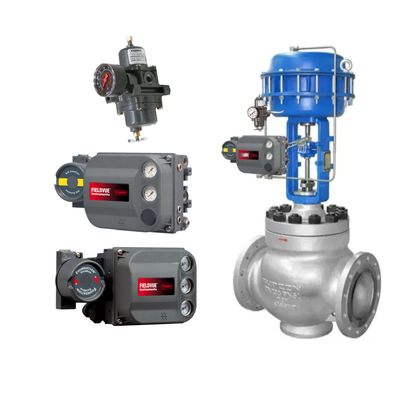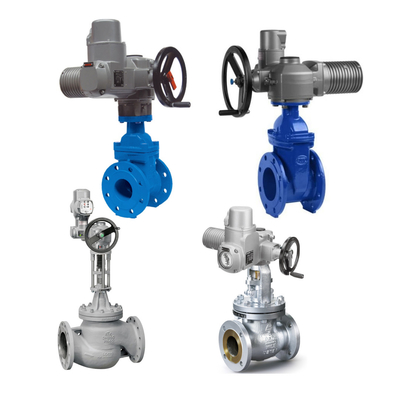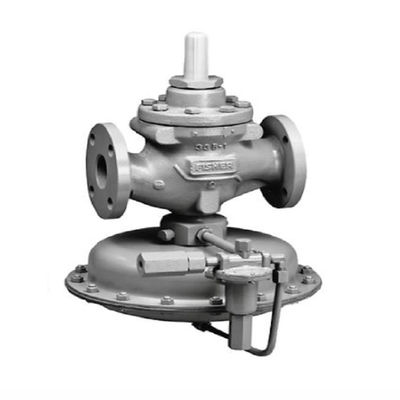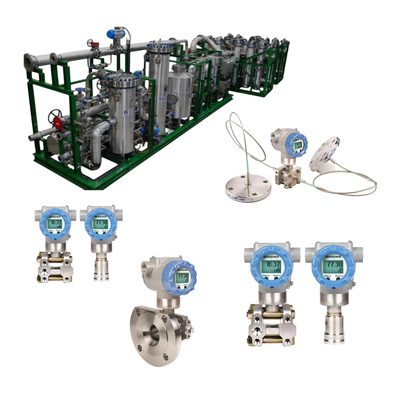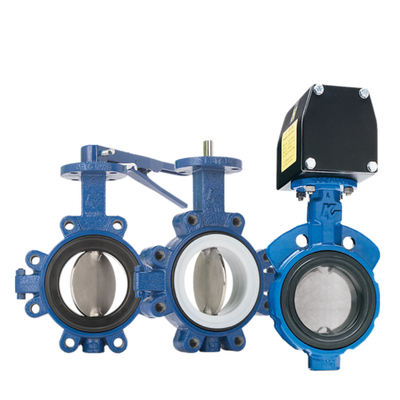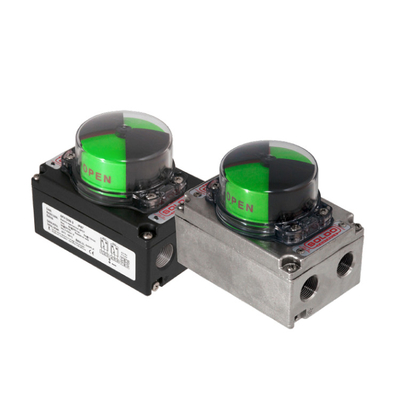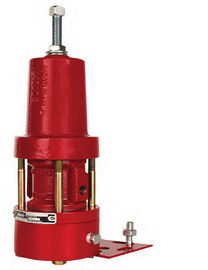When is a Positioner Used in a Control Valve?
As a seasoned professional with over two decades of experience in the valve industry, I’ve witnessed firsthand the transformative impact of valve positioners on control valve performance. These devices, often overlooked yet critical, bridge the gap between controller output and precise valve positioning. In this article, we’ll explore the when, why, and how of integrating a valve positioner into a control valve system, drawing from real-world applications and technical insights.
1. The Basics: What Is a Valve Positioner?
A valve positioner is an auxiliary device mounted on a control valve that ensures the valve’s actual position matches the controller’s desired setpoint. It acts as a feedback loop, comparing the valve stem’s displacement (measured via mechanical linkage or electronic sensors) with the controller’s output signal (typically 4–20 mA or pneumatic pressure). If a discrepancy exists, the positioner adjusts the actuator’s pressure or current to correct the position.
Key Functions of a Valve Positioner:
- Precision Control: Eliminates hysteresis and deadband, achieving ±1% accuracy or better.
- Dynamic Response: Compensates for friction, pressure fluctuations, and inertia.
- Signal Amplification: Boosts weak control signals to drive large actuators.
- Diagnostics: Modern smart positioners offer self-calibration, leakage detection, and performance trending.

2. When Is a Positioner Necessary?
Not every control valve requires a positioner, but the following scenarios demand their use:
Scenario 1: High-Precision Processes
In industries like pharmaceuticals or semiconductor manufacturing, even a 1% deviation in flow or pressure can ruin a batch. A positioner ensures the valve maintains exact positions, overriding minor disturbances.
Example: A biotech firm uses a control valve with a smart positioner to regulate sterile airflow in fermenters. The positioner’s sub-millimeter accuracy prevents contamination risks.
Scenario 2: Large Valve Sizes or High Pressure Drops
Valves with large diameters (e.g., >6 inches) or those operating across significant pressure drops (ΔP > 100 psi) experience greater friction and unbalanced forces. A positioner counteracts these effects by amplifying the control signal.
Case Study: A refinery’s 12-inch control valve controlling crude oil flow struggled with sluggish response. Adding a pneumatic positioner reduced settling time by 70%.
Scenario 3: Long Signal Transmission Distances
Pneumatic signals (3–15 psi) degrade over long distances (e.g., >100 feet) due to line losses. A positioner at the valve site reconditions the signal, ensuring reliable operation.
Tip: For electric-pneumatic (E/P) systems, use a smart positioner with HART communication to monitor signal integrity remotely.
Scenario 4: Split-Range or Custom Flow Characteristics
When a single control valve must handle multiple flow ranges (e.g., 0–50% and 50–100% of capacity), a positioner with split-range capability divides the controller’s output into distinct zones. Similarly, non-linear flow characteristics (e.g., quick-opening valves) can be linearized via positioner tuning.
Application: A chemical plant uses a control valve with a positioner to switch between low-flow recirculation and high-flow production modes without recalibrating the DCS.
Scenario 5: Harsh or Hazardous Environments
Valves exposed to extreme temperatures, corrosion, or explosive atmospheres benefit from positioners that isolate the controller from field conditions. Smart positioners with intrinsically safe (IS) ratings simplify wiring in Class I, Division 1 zones.
Best Practice: Opt for stainless steel or explosion-proof housings for offshore or chemical applications.
3. Types of Valve Positioners and Their Roles
Pneumatic Positioners
- How They Work: Use a nozzle-flapper mechanism to convert pneumatic signals (3–15 psi) into precise valve movements.
- When to Use: Ideal for air-operated valves in traditional plants with existing pneumatic infrastructure.
- Pro Tip: Pair with volume boosters for large actuators to avoid signal sagg.
Electro-Pneumatic (E/P) Positioners
- How They Work: Convert 4–20 mA electric signals to pneumatic output (3–15 psi) using a solenoid-driven I/P transducer.
- When to Use: Modernize older pneumatic systems or integrate with DCS/PLC platforms.
- Advantage: Eliminates the need for separate I/P converters, reducing cabinet space.
Smart Positioners
- How They Work: Microprocessor-based devices with diagnostics, auto-tuning, and digital communication (HART, Foundation Fieldbus, PROFIBUS).
- When to Use: Predictive maintenance, remote calibration, or processes requiring real-time valve health data.
- Case Study: A power plant reduced unplanned downtime by 45% after deploying smart positioners with vibration sensors to detect early actuator wear.
4. Common Pitfalls and Solutions
Pitfall 1: Over-Positioning
Symptom: The valve oscillates around the setpoint due to excessive positioner gain.
Solution: Perform a step test and tune the positioner’s proportional, integral, and derivative (PID) settings. Smart positioners automate this via auto-tune functions.
Pitfall 2: Stiction (Static Friction)
Symptom: The valve “sticks" at certain positions, causing overshoot or hunting.
Solution: Use a positioner with dither (a high-frequency, low-amplitude signal) to break static friction. Smart positioners offer adjustable dither frequencies.
Pitfall 3: Incorrect Feedback Linkage
Symptom: The valve positioner reads the wrong stem travel, leading to offset.
Solution: Verify the mechanical linkage aligns with the valve’s full stroke. For rotary valves, use a cam or lever arm to convert linear motion to angular displacement.

5. The Future of Valve Positioners
The rise of Industry 4.0 is driving innovations in valve positioner technology:
- WirelessHART Positioners: Enable battery-powered operation for remote valves, eliminating costly wiring.
- AI-Driven Diagnostics: Machine learning algorithms predict valve failures by analyzing positioner data trends.
- Digital Twins: Simulate valve behavior under varying conditions to optimize positioner settings before installation.
Example: A water treatment plant uses wireless positioners with cloud-based analytics to monitor valve health across a sprawling campus, reducing inspection rounds by 80%.
Conclusion: Positioners as Enablers of Process Excellence
A valve positioner is not just an accessory—it’s the brain that transforms a control valve from a passive component into an intelligent, adaptive part of your process. Whether you’re dealing with tight tolerances, harsh environments, or legacy systems, the right positioner can unlock efficiency, reliability, and cost savings.
As you evaluate your next project, ask yourself: “Could a positioner turn this good valve into a great one?" The answer, more often than not, is a resounding yes.
Key Takeaways:
- Use positioners for high-precision, large, or remote valves.
- Choose pneumatic, E/P, or smart types based on your infrastructure.
- Smart positioners offer diagnostics and remote tuning.
- Avoid over-positioning and stiction through proper tuning.
- Embrace wireless and AI technologies for next-gen reliability.
By integrating a valve positioner into your control valve strategy, you’re not just installing a device—you’re investing in process resilience.

 Your message must be between 20-3,000 characters!
Your message must be between 20-3,000 characters! Please check your E-mail!
Please check your E-mail!  Your message must be between 20-3,000 characters!
Your message must be between 20-3,000 characters! Please check your E-mail!
Please check your E-mail! 
